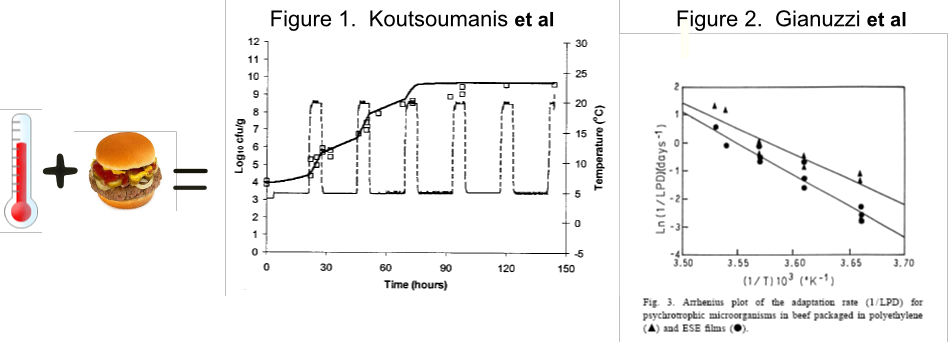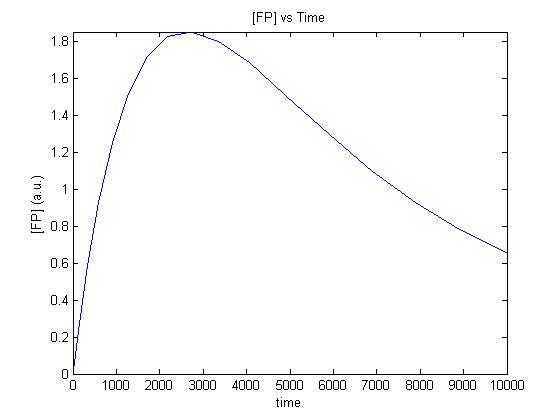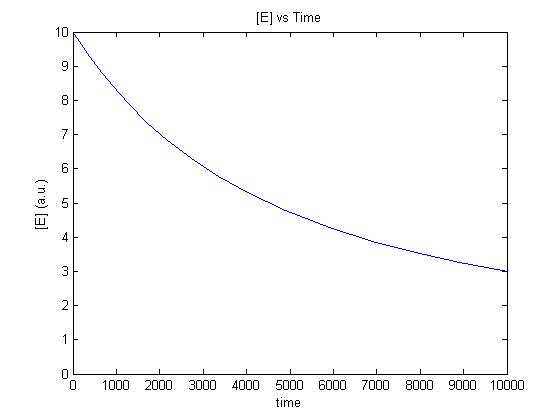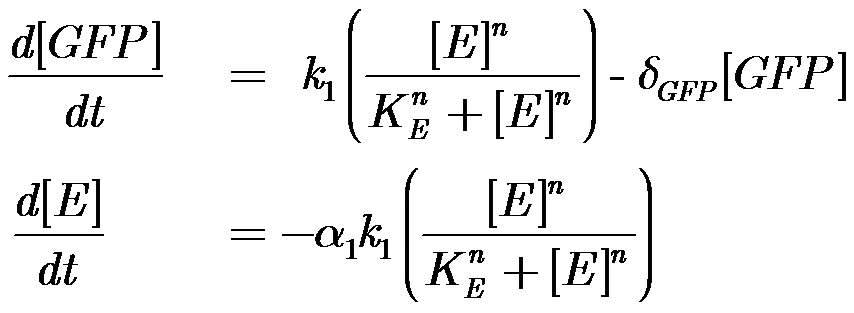Imperial/Cell by Date/Modelling
From 2007.igem.org
m |
m (→Modelling the spoilage of Aerobically Stored Ground Hamburger Meat) |
||
| Line 26: | Line 26: | ||
<br clear = "all" > | <br clear = "all" > | ||
| - | A substantial body of work already exists on the topic of spoilage of ground beef by living organisms. Figure 1 shows the results of a model developed by Koutsoumanis 1 to simulate the spoilage under dynamic temperature conditions of meat by Pseudomonas, - an organism responsible for spoiling refrigerated packaged beef.<br><br> | + | A substantial body of work already exists on the topic of spoilage of ground beef by living organisms. Figure 1 shows the results of a model developed by Koutsoumanis 1 to simulate the spoilage under dynamic temperature conditions of meat by Pseudomonas, - an organism responsible for spoiling refrigerated packaged beef(Solid Line represents bacterial growth dotted line is temperature).<br><br> |
An important property was the almost instantaneous response time of the Pseudomonas' growth parameter. To report accurately our system should therefore also share this property.<br><br> | An important property was the almost instantaneous response time of the Pseudomonas' growth parameter. To report accurately our system should therefore also share this property.<br><br> | ||
Koutsoumanis' model, along with Giannuzzi ‘s 2 are both based on the larger class of Gompertz model. A remarkable feature of such models is that through manipulation of the Gompertz Parameters and assuming a Arrhenius type relationship between Pseudomonas' growth parameter and temperature we can infer the Activation energy of the spoilage reaction. 3 (Figure 2) .<br><br> | Koutsoumanis' model, along with Giannuzzi ‘s 2 are both based on the larger class of Gompertz model. A remarkable feature of such models is that through manipulation of the Gompertz Parameters and assuming a Arrhenius type relationship between Pseudomonas' growth parameter and temperature we can infer the Activation energy of the spoilage reaction. 3 (Figure 2) .<br><br> | ||
As given in our specifications the Activation energy for ground meat seem to be around 30kJ/mol. Again to report accurately our system needs to have a similar activation energy.<br><br> | As given in our specifications the Activation energy for ground meat seem to be around 30kJ/mol. Again to report accurately our system needs to have a similar activation energy.<br><br> | ||
| - | |||
==Modelling our system: Energy-limited constitutive expression by pTET-mut3BGFP== | ==Modelling our system: Energy-limited constitutive expression by pTET-mut3BGFP== | ||
Revision as of 15:35, 26 October 2007

Cell by Date: Modelling
Modelling the spoilage of Aerobically Stored Ground Hamburger Meat
A substantial body of work already exists on the topic of spoilage of ground beef by living organisms. Figure 1 shows the results of a model developed by Koutsoumanis 1 to simulate the spoilage under dynamic temperature conditions of meat by Pseudomonas, - an organism responsible for spoiling refrigerated packaged beef(Solid Line represents bacterial growth dotted line is temperature).
An important property was the almost instantaneous response time of the Pseudomonas' growth parameter. To report accurately our system should therefore also share this property.
Koutsoumanis' model, along with Giannuzzi ‘s 2 are both based on the larger class of Gompertz model. A remarkable feature of such models is that through manipulation of the Gompertz Parameters and assuming a Arrhenius type relationship between Pseudomonas' growth parameter and temperature we can infer the Activation energy of the spoilage reaction. 3 (Figure 2) .
As given in our specifications the Activation energy for ground meat seem to be around 30kJ/mol. Again to report accurately our system needs to have a similar activation energy.
Modelling our system: Energy-limited constitutive expression by pTET-mut3BGFP
| Parameter | Description |
|---|---|
| k1 | Maximal constitutive transcription by pTET |
| KE | Half-Saturation Coefficient for Energy Hill function |
| n | Positive Cooperativity Coefficient (Hill-coefficient) |
| δGFP | Decay constant of mut3BGFP |
here δGFP = 0.0005
With some understanding of how Pseudomonas spoils aerobically stored ground beef, it is really important for us to gain some understanding of how our sytem behaves in similar scenarios, to the models developed by Koutsoumanis and Giannuzi, in order to extract the same parameters.
For isothermal conditions we have been able to develop some simple models of the gene expression of our sytem, with a strong dependance on energy depletion, as we believe this is the major limiting factor of our system.
As seen above in figures 3 and 4, with energy depletion as our major limiting factor we expect the concentration of our reporter gene to increase to a peak and then, as energy runs out, expressoin is curbed and decay of our reporter dominates, giving an exponential-like decay.
The m-files used in the following simulations can be accessed on our Software page.
References
- [http://iufost.edpsciences.org/index.php?option=article&access=standard&Itemid=129&url=/articles/iufost/pdf/2006/01/iufost06000765.pdf Koutsoumanis K, Stamatiou A, Skandamis P, Nychas GJ. Development of a Microbial Model for the Combined Effect of Temperature and pH on Spoilage of Ground Meat, and Validation of the Model under Dynamic Temperature Conditions. Appl Environ Microbiol. 2006 Jan;72(1):124-34.]
- [http://www.sciencedirect.com/science?_ob=ArticleURL&_udi=B6T7K-3S3M25D-B&_user=217827&_coverDate=01%2F06%2F1998&_rdoc=1&_fmt=&_orig=search&_sort=d&view=c&_acct=C000011279&_version=1&_urlVersion=0&_userid=217827&md5=80630ba21fbc6869b9f5179d334734da Giannuzzi L, Pinotti A, Zaritzky N. Mathematical modelling of microbial growth in packaged refrigerated beef stored at different temperatures. Int J Food Microbiol. 1998 Jan 6;39(1-2):101-10.]
- [http://66.102.1.104/scholar?hl=en&lr=&q=cache:thi6BTIW1YMJ:www.vitsab.com/PDF/V507.pdf+TTI+Beef+Activation+Energy Leak, F.W. (2000): Quality changes in Ground beef during distribution and storage, and determination of Time- Temperature-Indicator (TTI) charakteristic of ground beef University of Florida Institute of food and Agricultural Sciences Internet: www.vitsab.com, Stand: April 2003]
- [http://www.sciencedirect.com/science?_ob=ArticleURL&_udi=B6T7K-4CP14B0-2&_user=217827&_coverDate=11%2F15%2F2004&_rdoc=1&_fmt=&_orig=search&_sort=d&view=c&_acct=C000011279&_version=1&_urlVersion=0&_userid=217827&md5=cf92d0ca2566b940589f521601b36eca Lopez, 2004 : Critique of Gompertz Model]
- [http://www.sciencedirect.com/science?_ob=ArticleURL&_udi=B6T7K-485PCG5-3&_user=217827&_coverDate=11%2F01%2F2003&_rdoc=1&_fmt=&_orig=search&_sort=d&view=c&_acct=C000011279&_version=1&_urlVersion=0&_userid=217827&md5=608c478638b6d194576d0f151be2223f Huang, 2003 Simulation of a Similar Problem using Gompertz Model]



